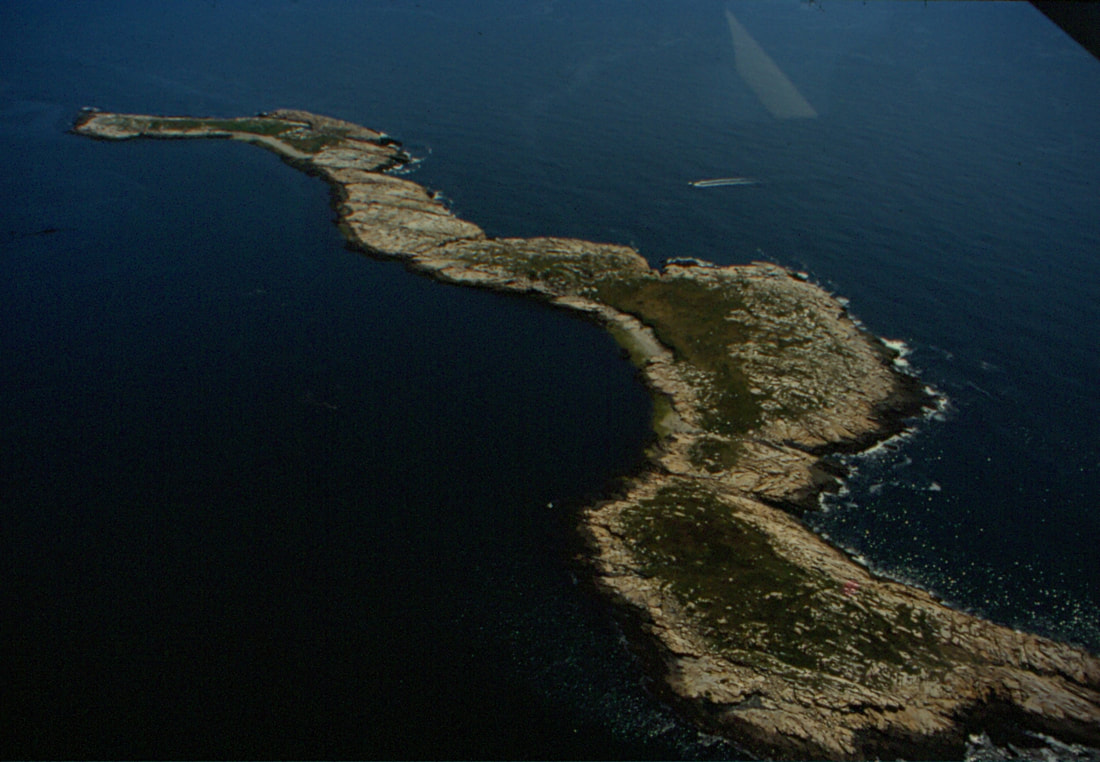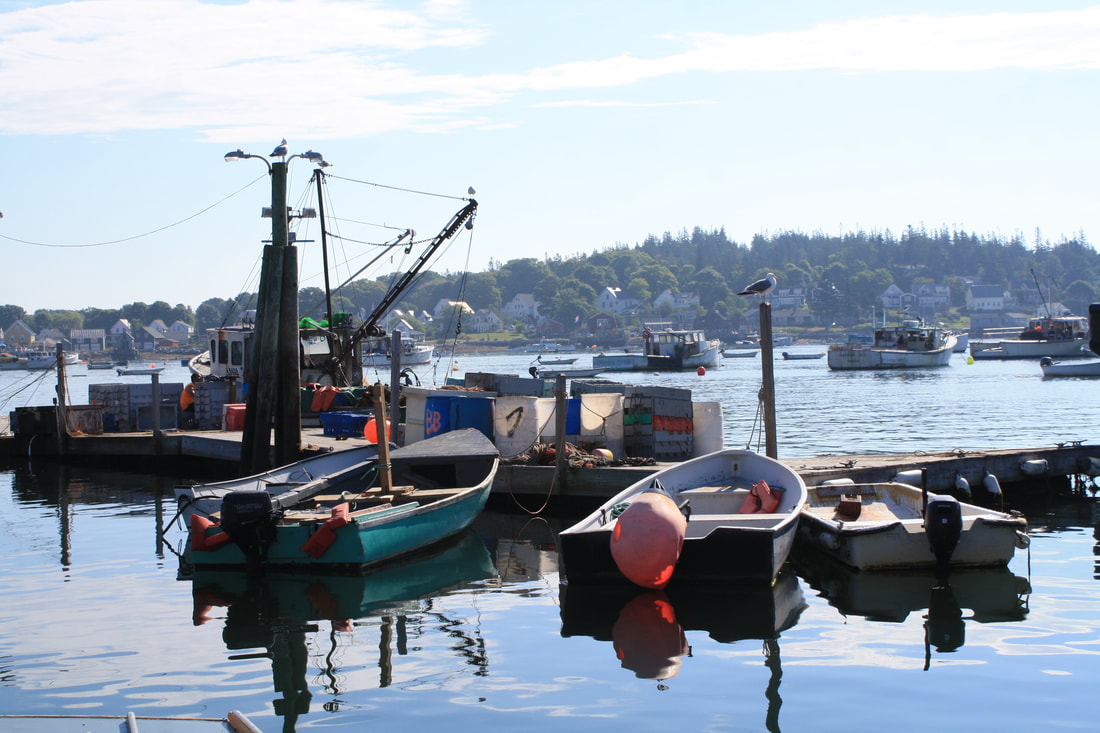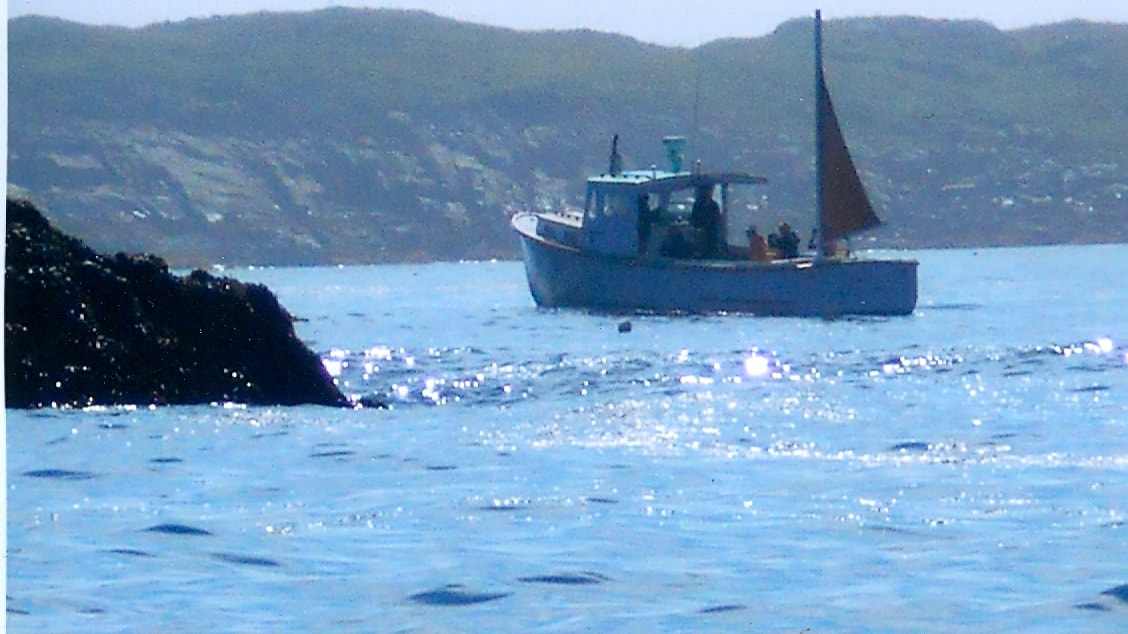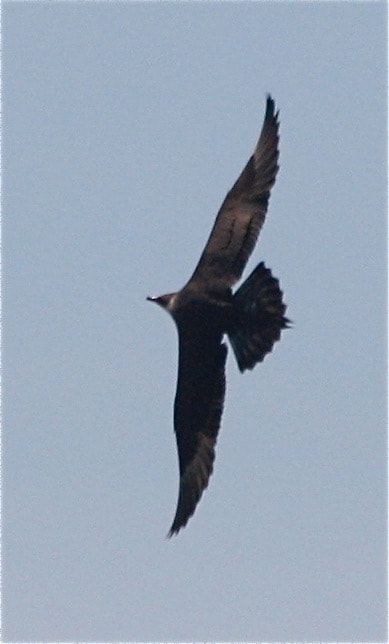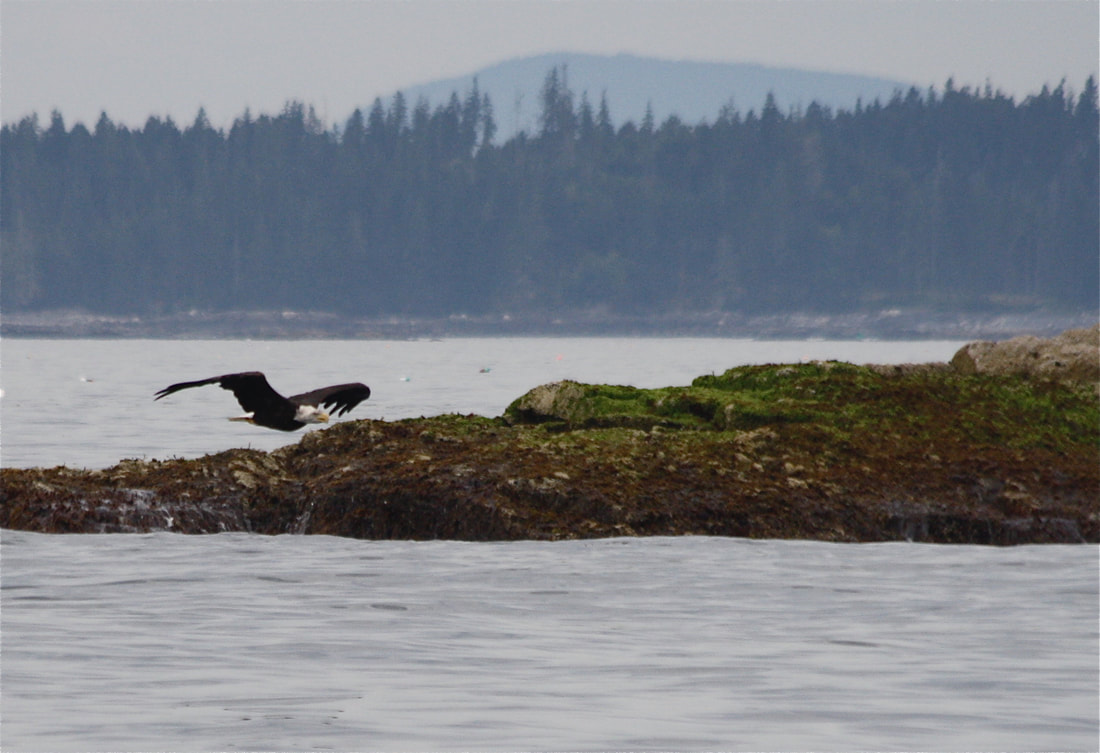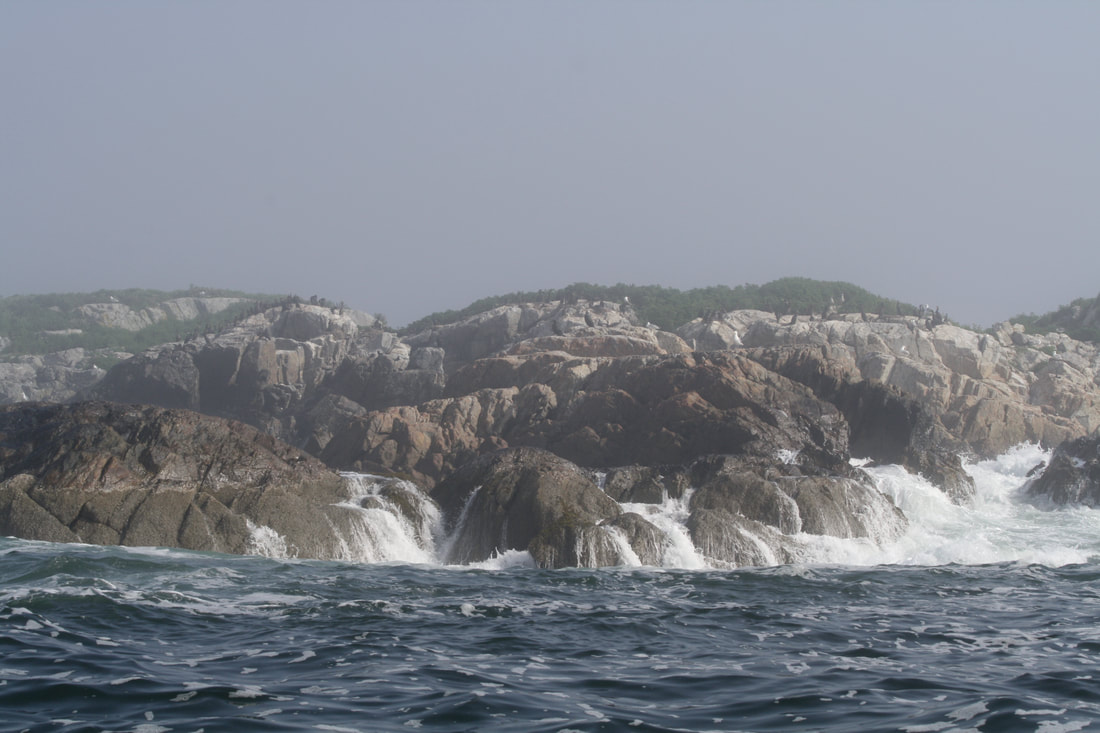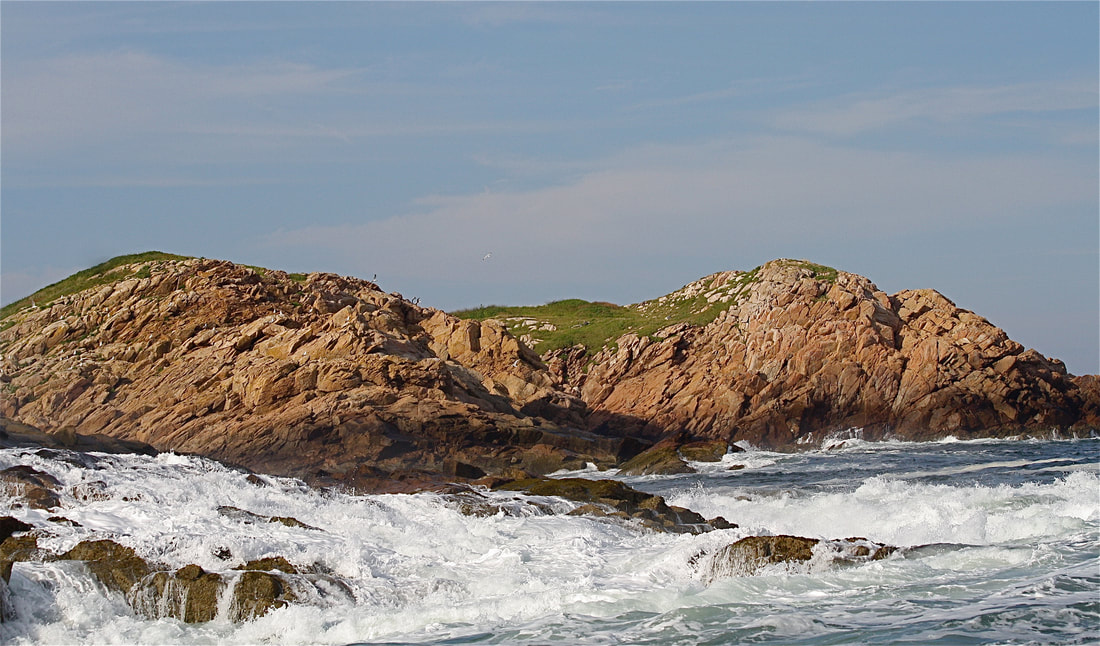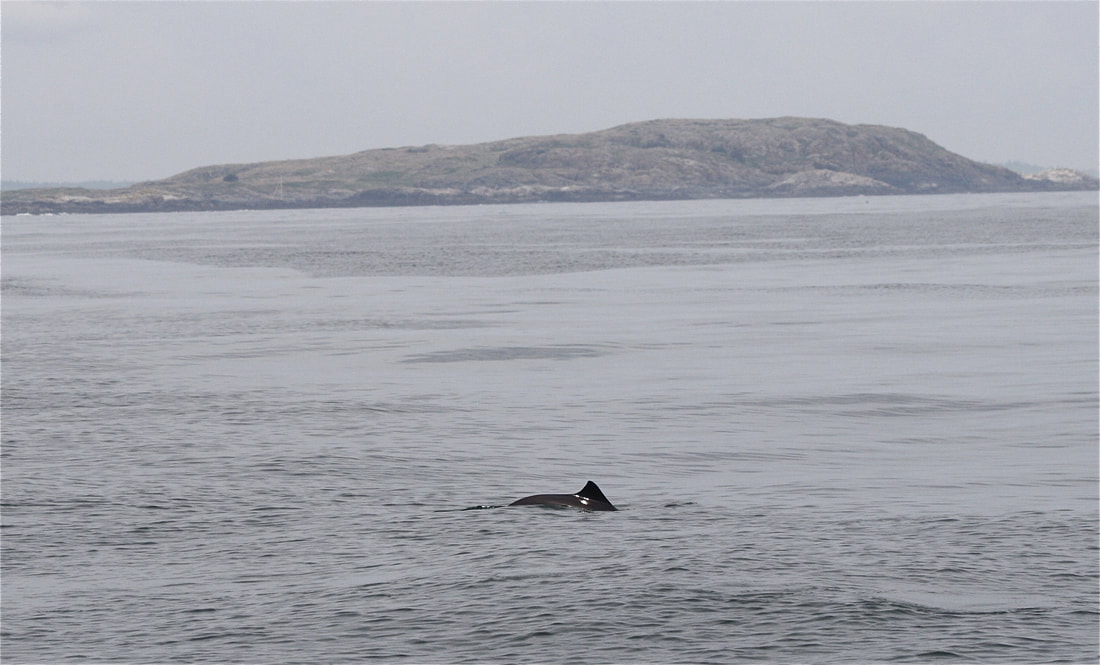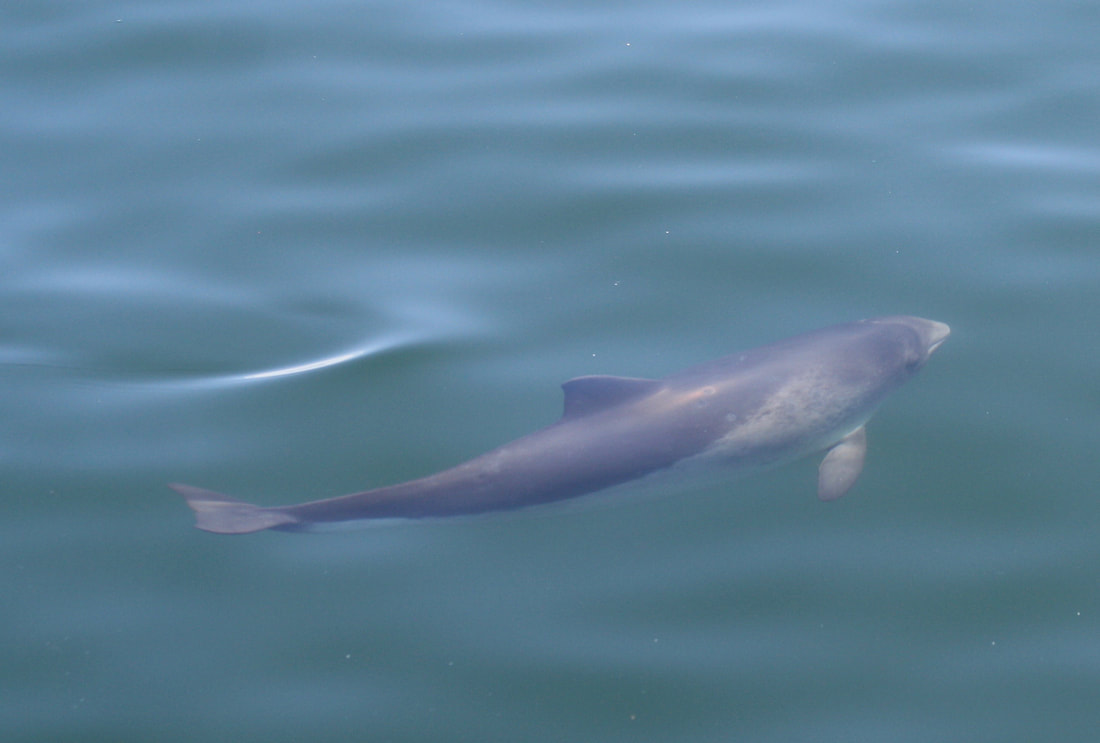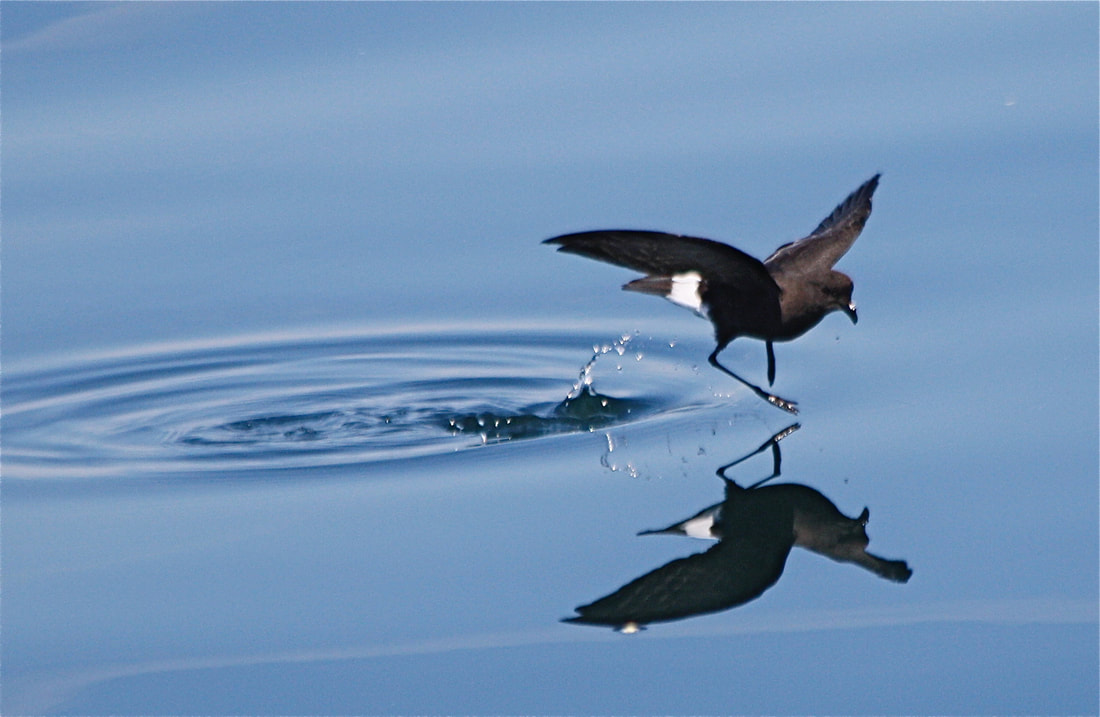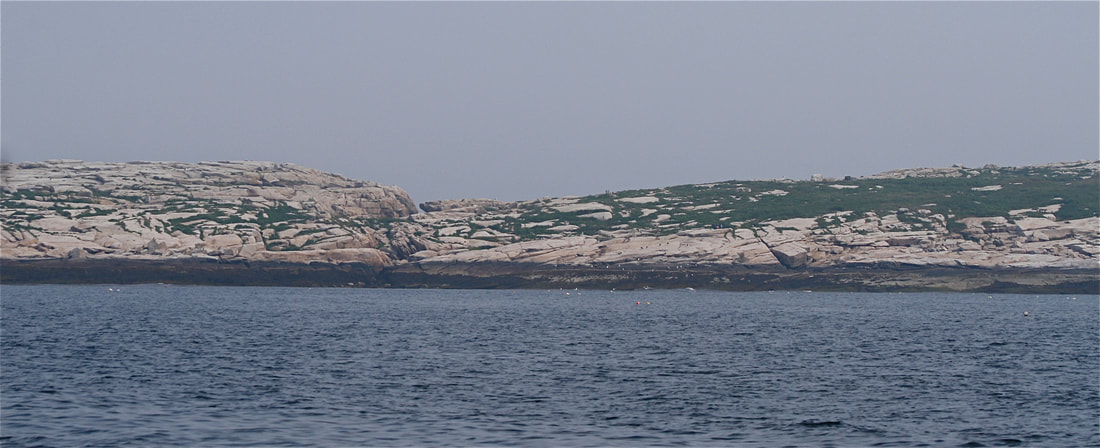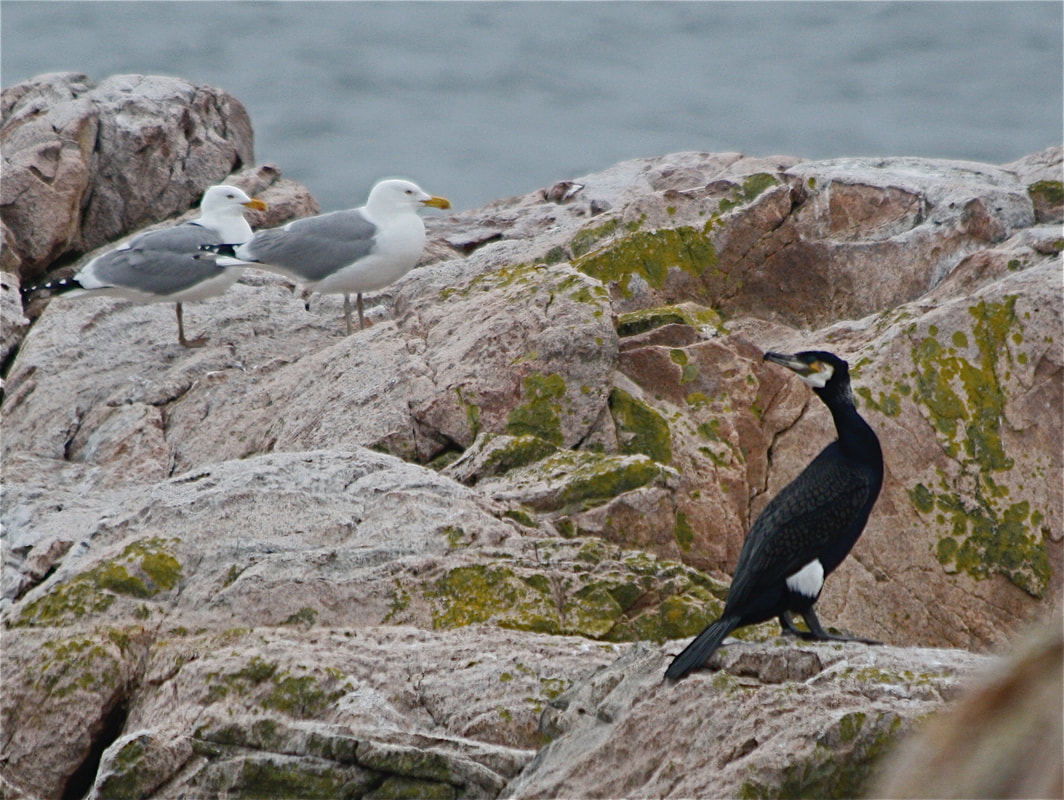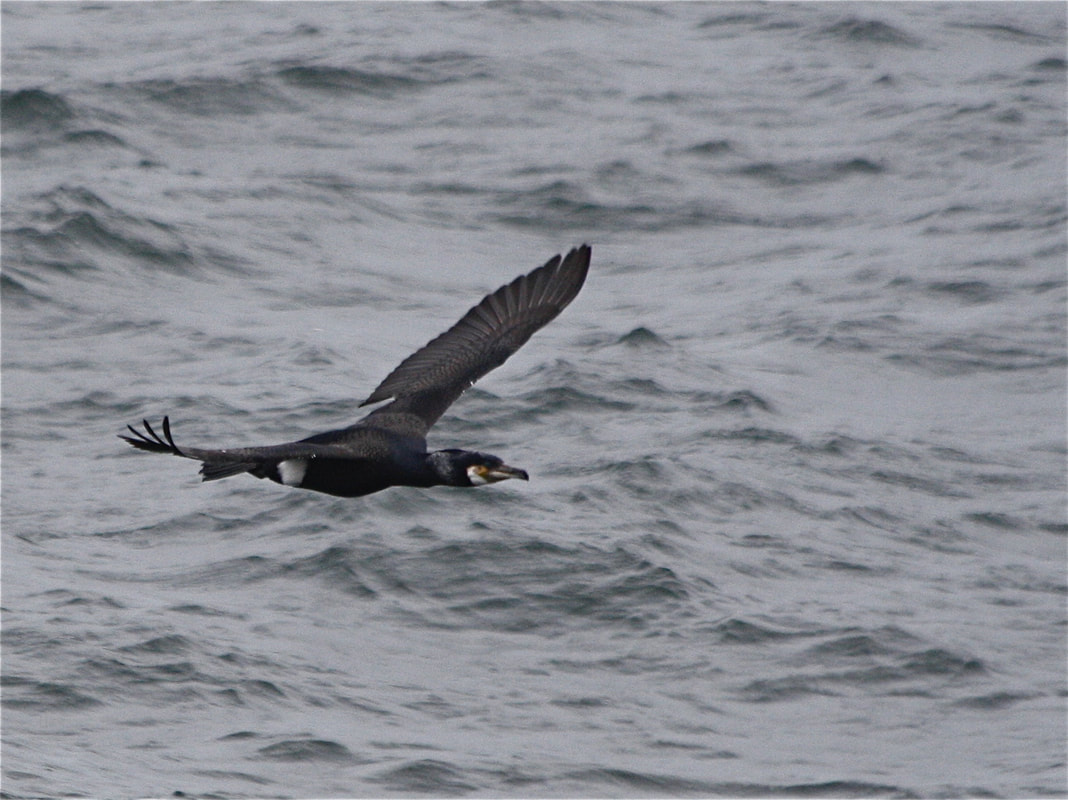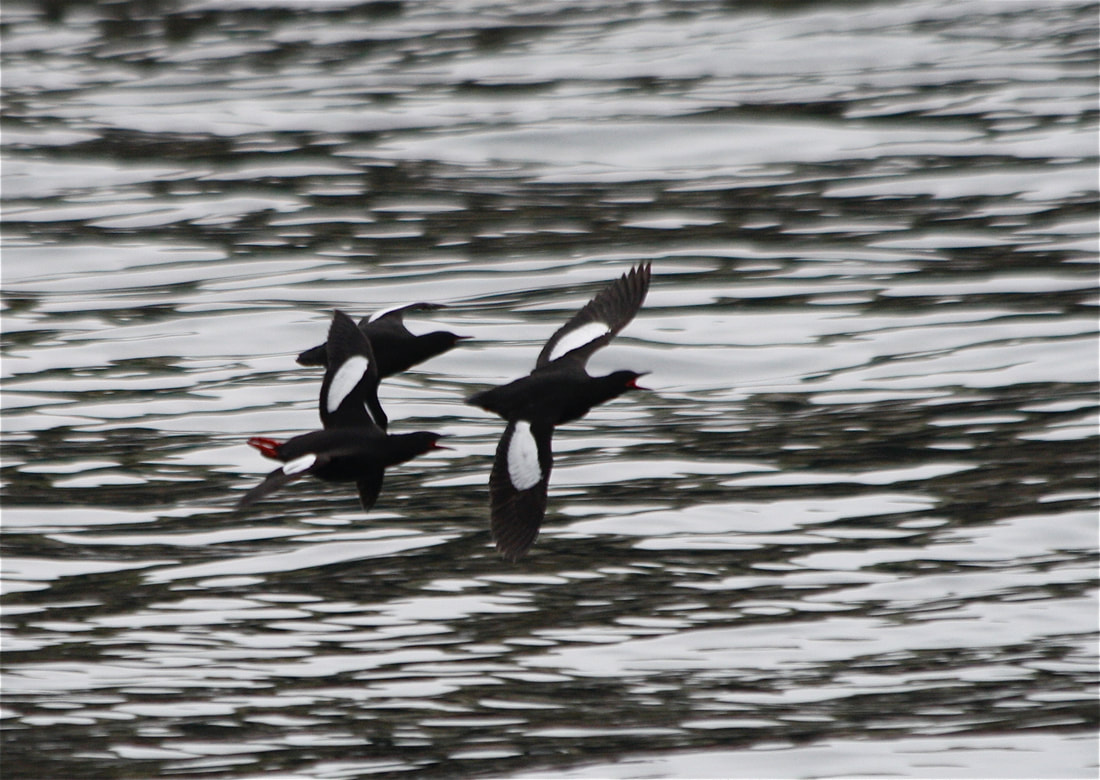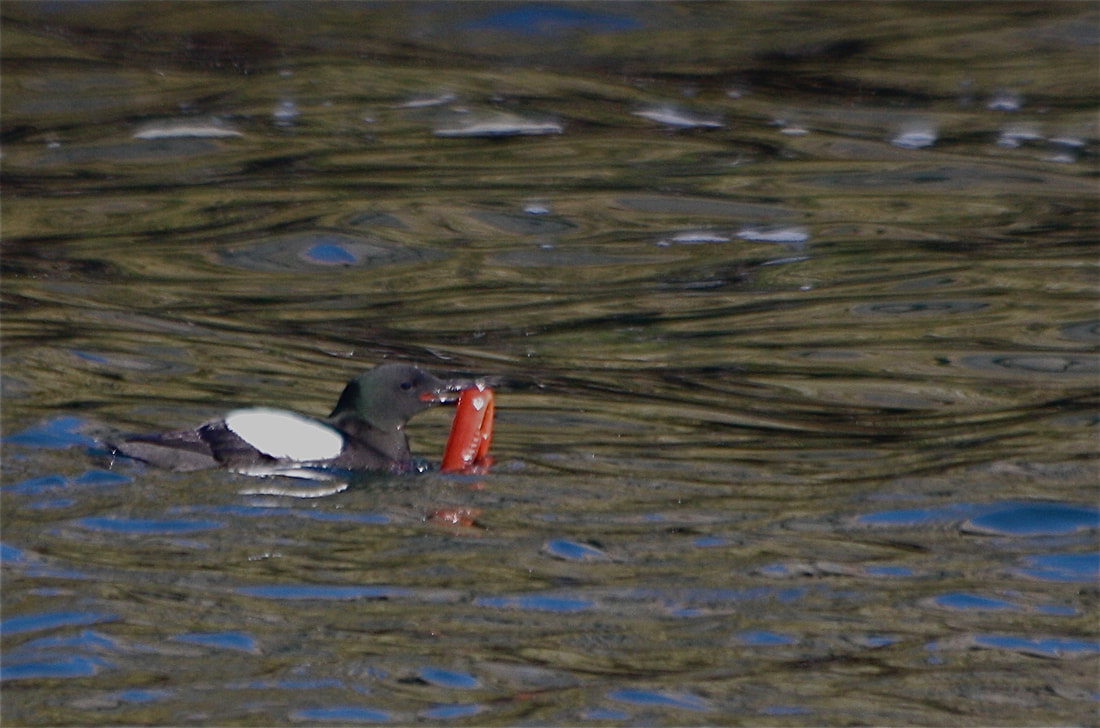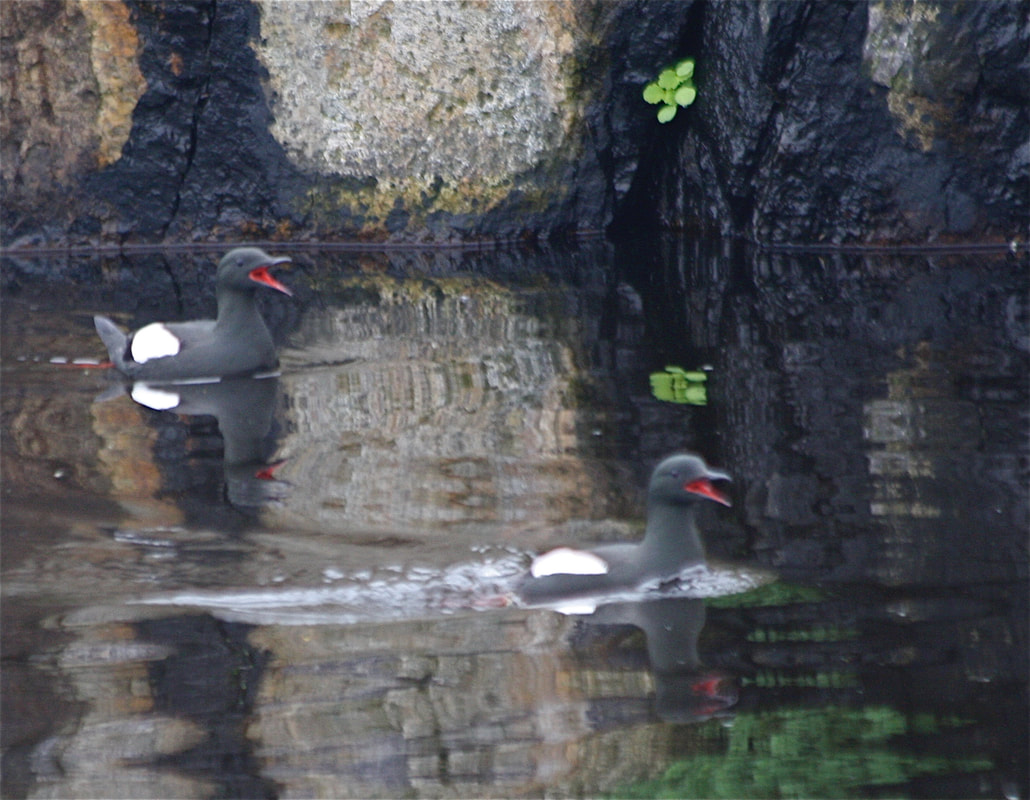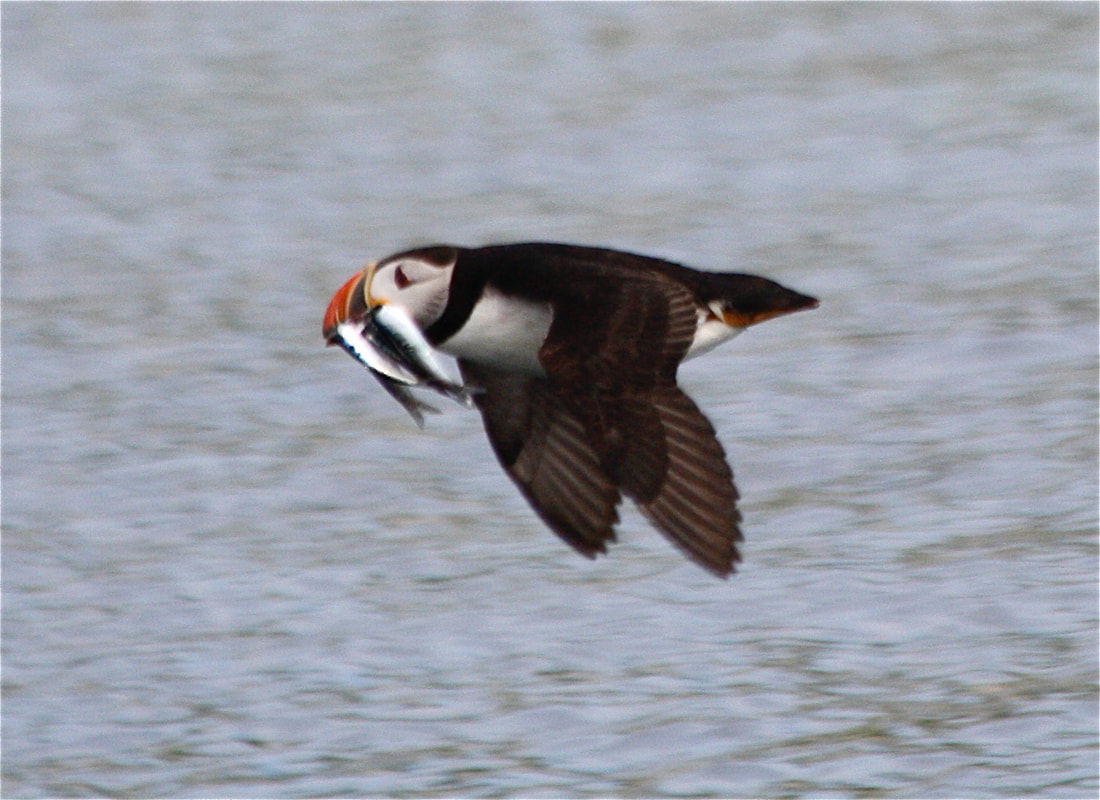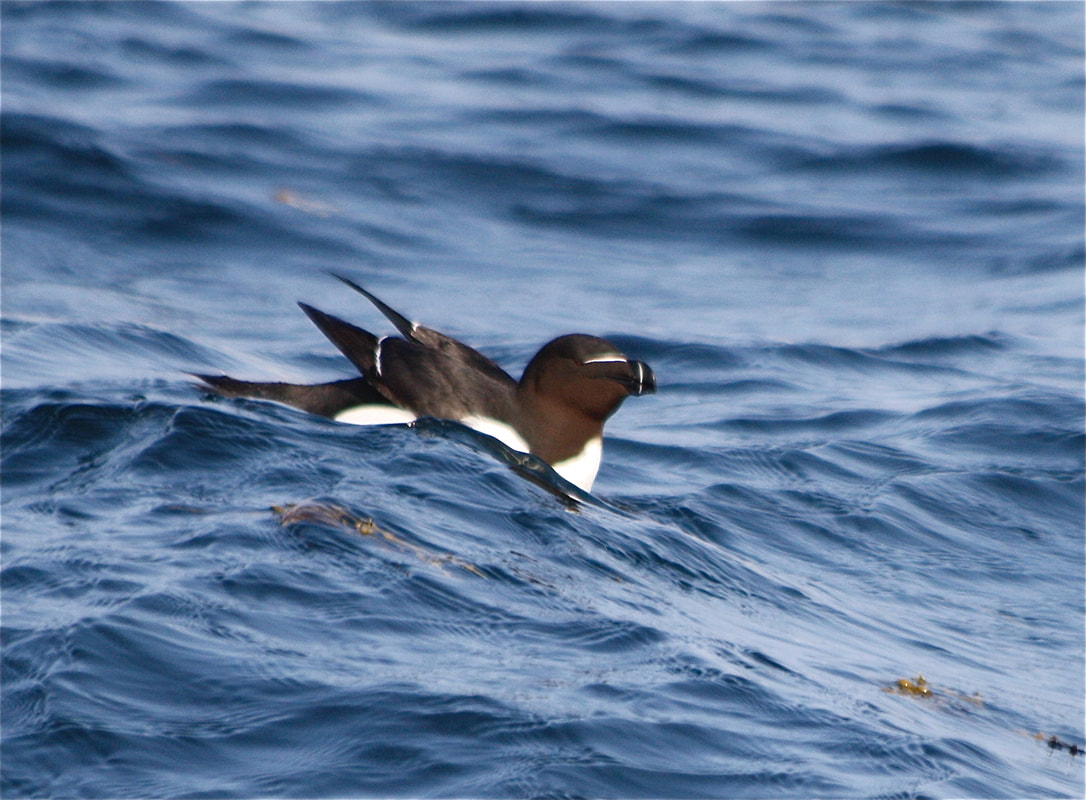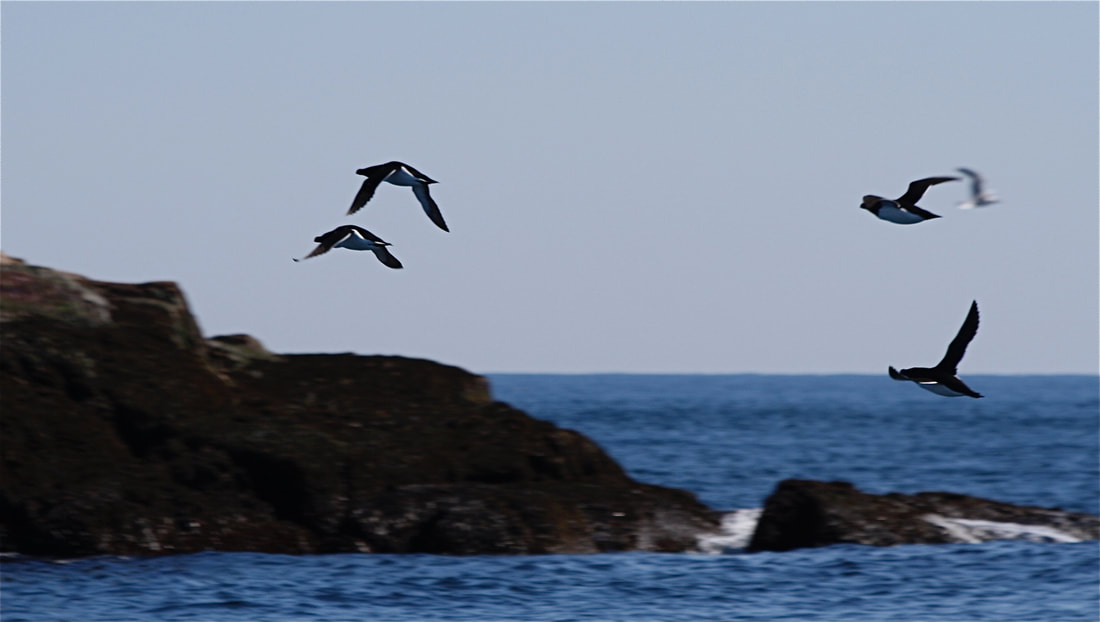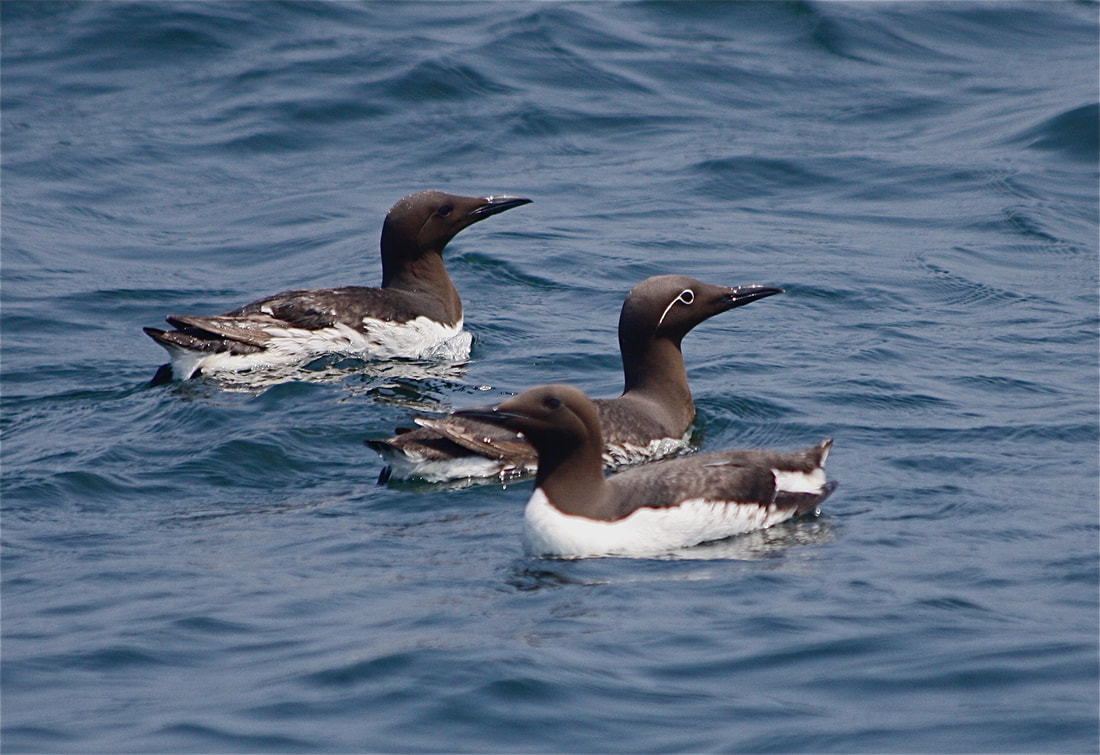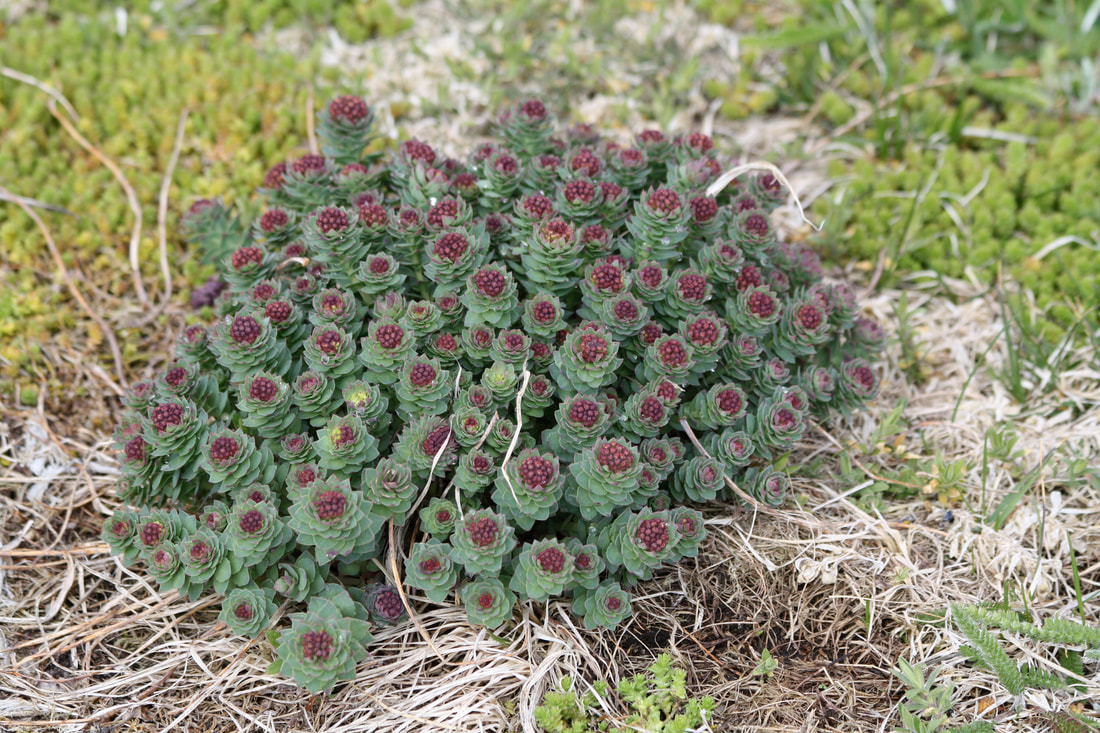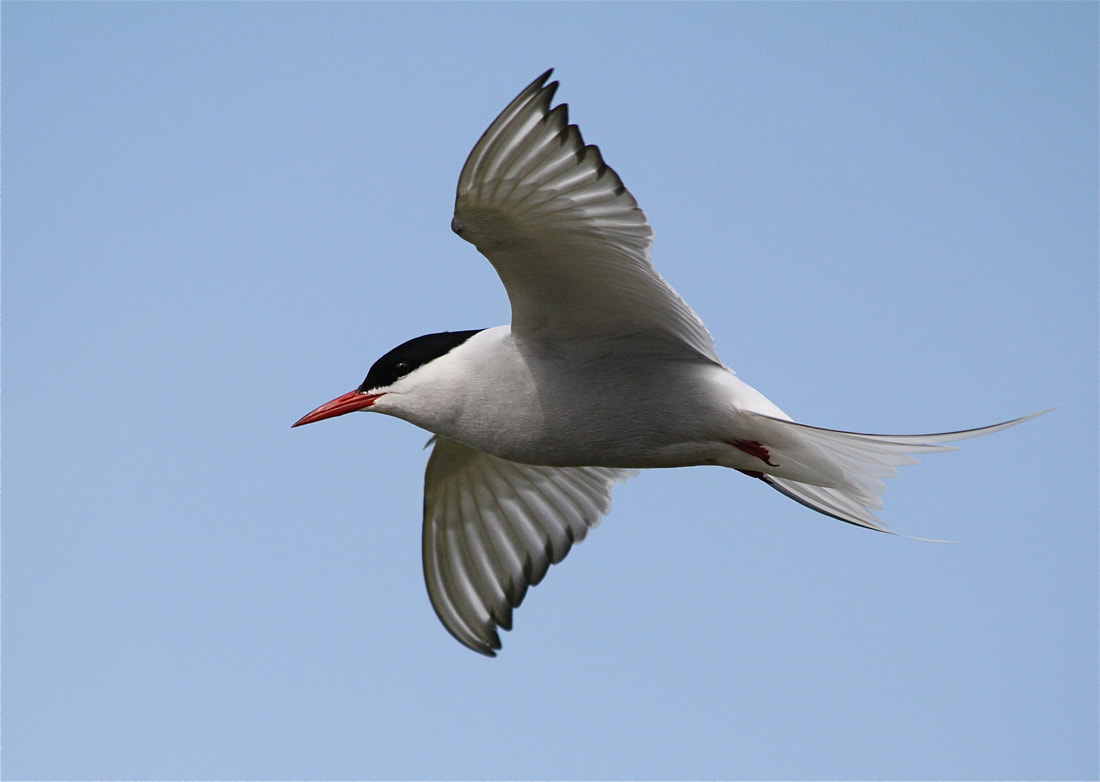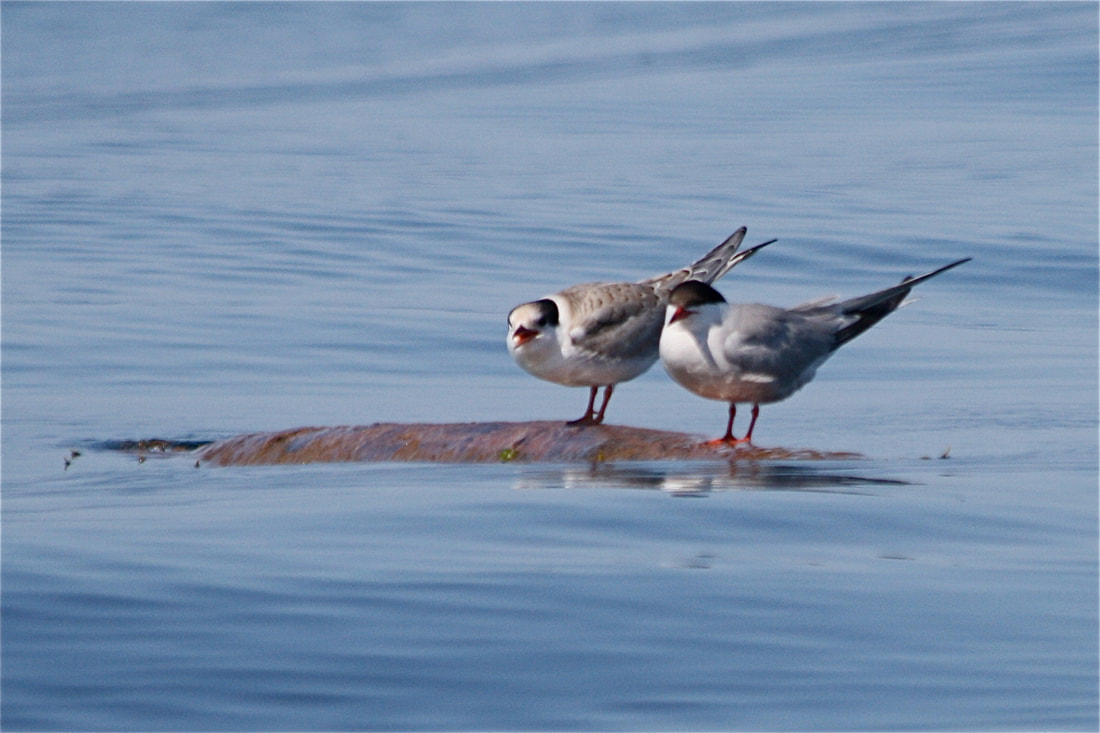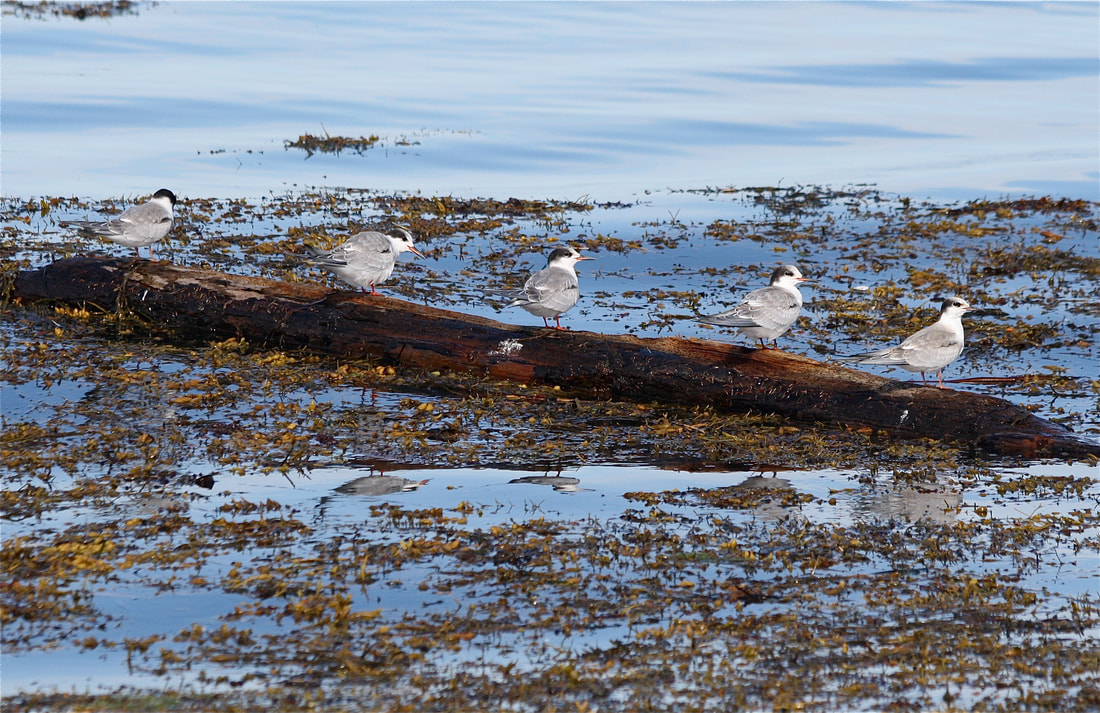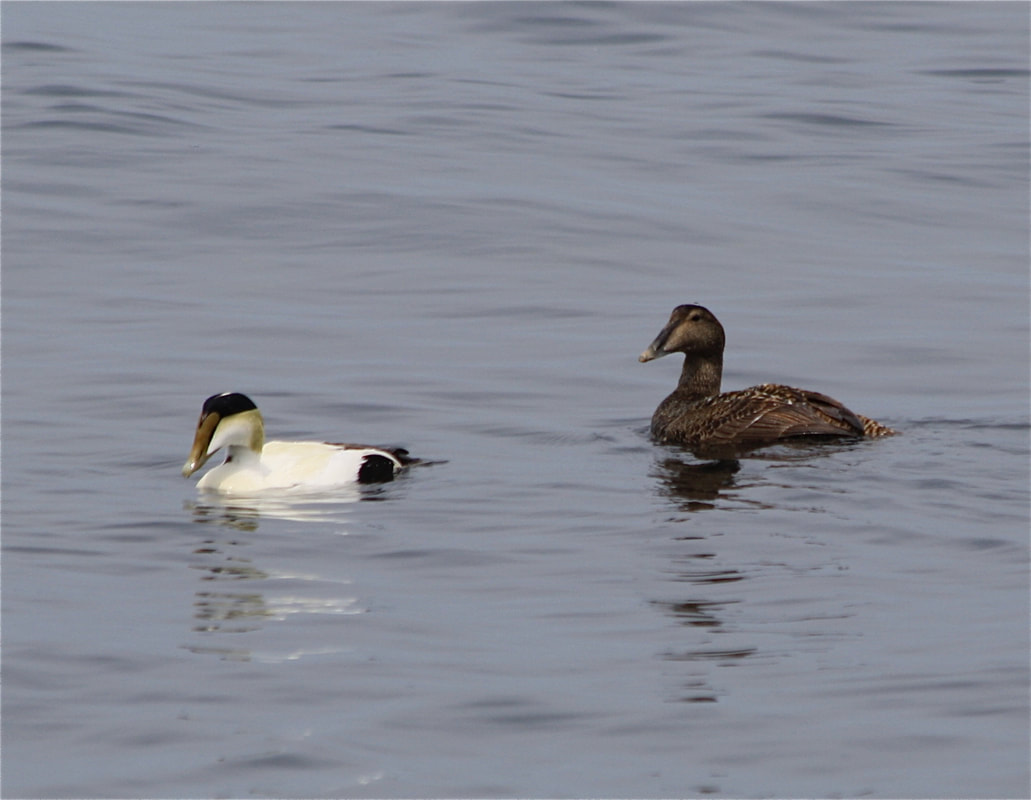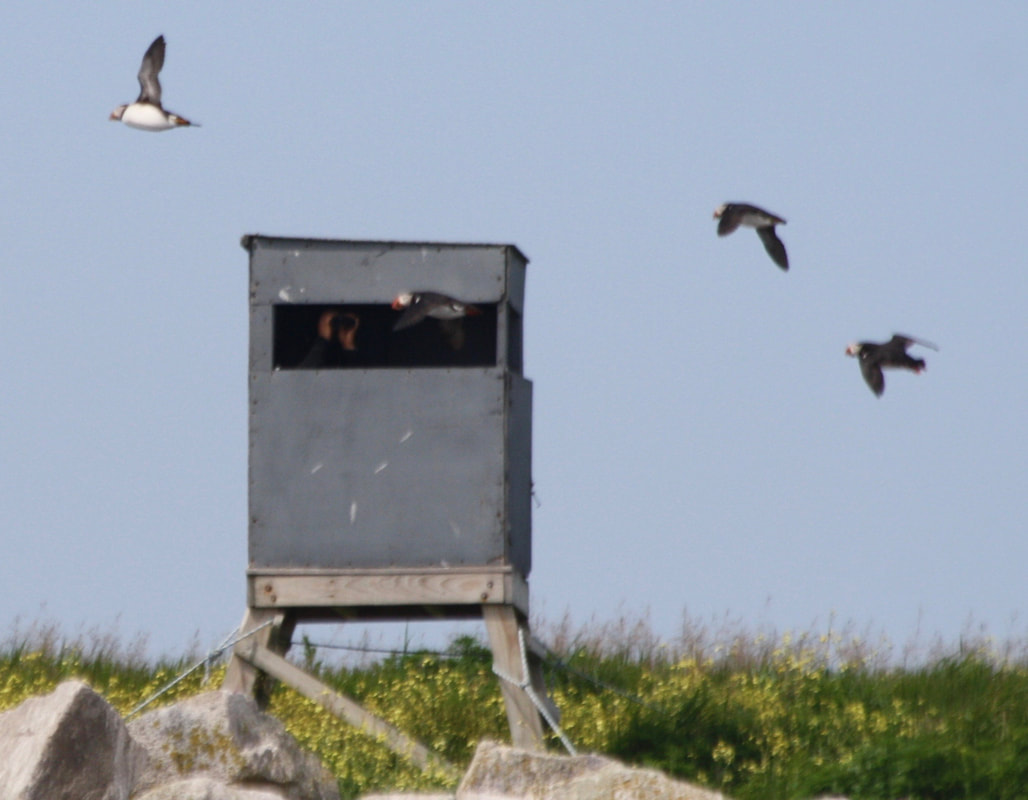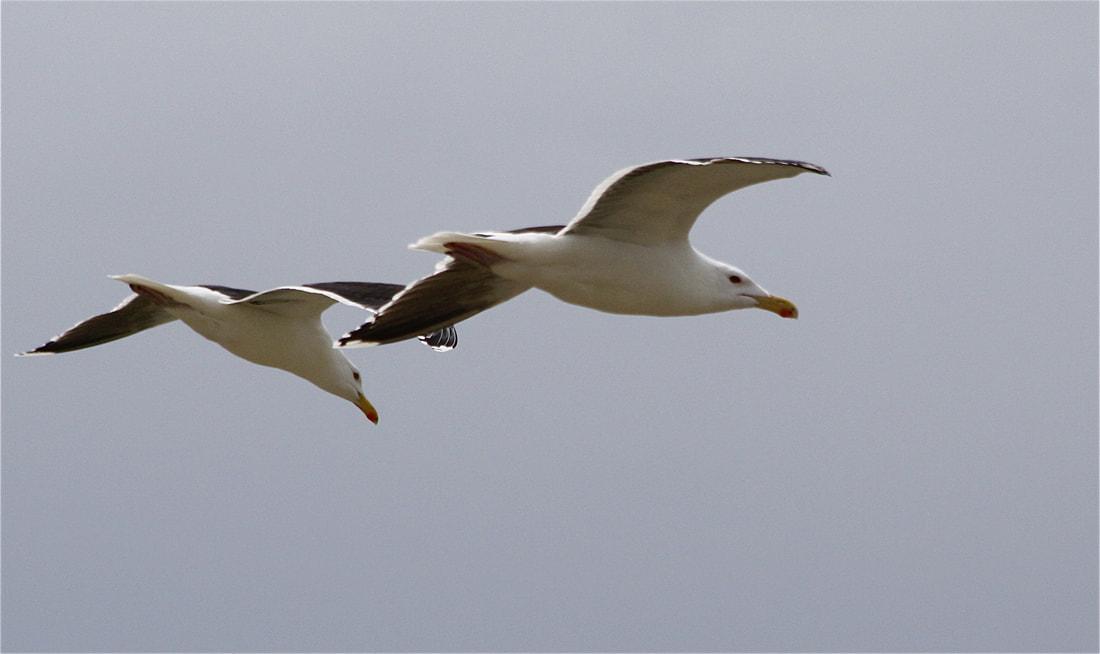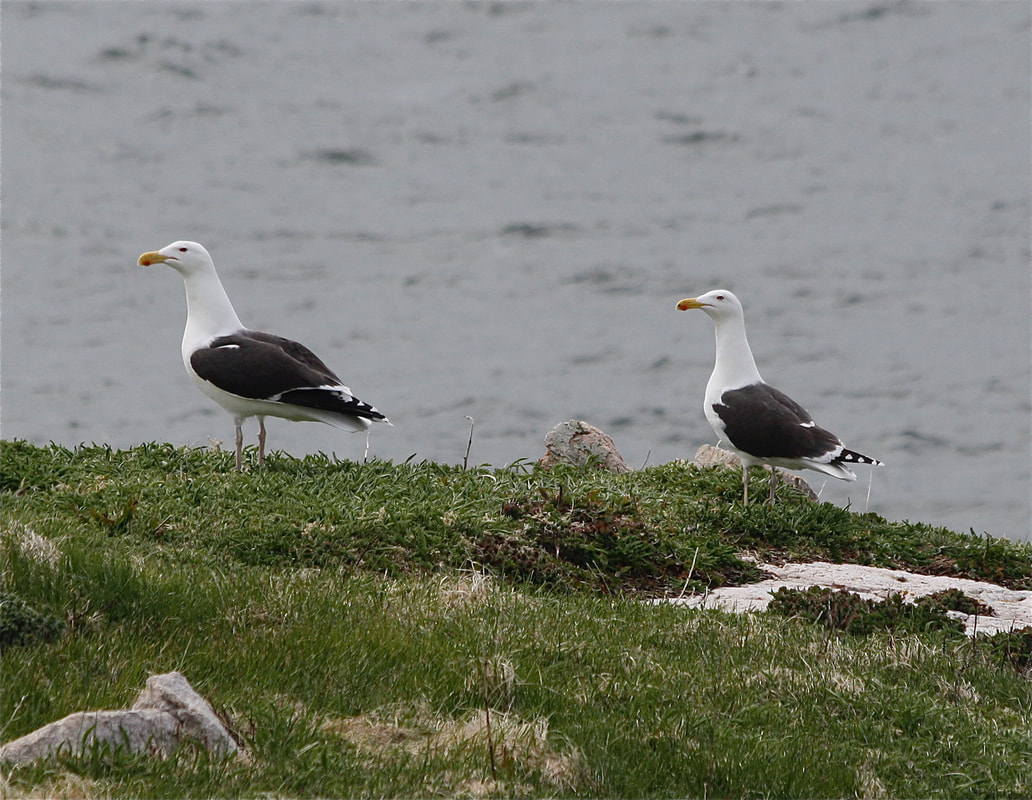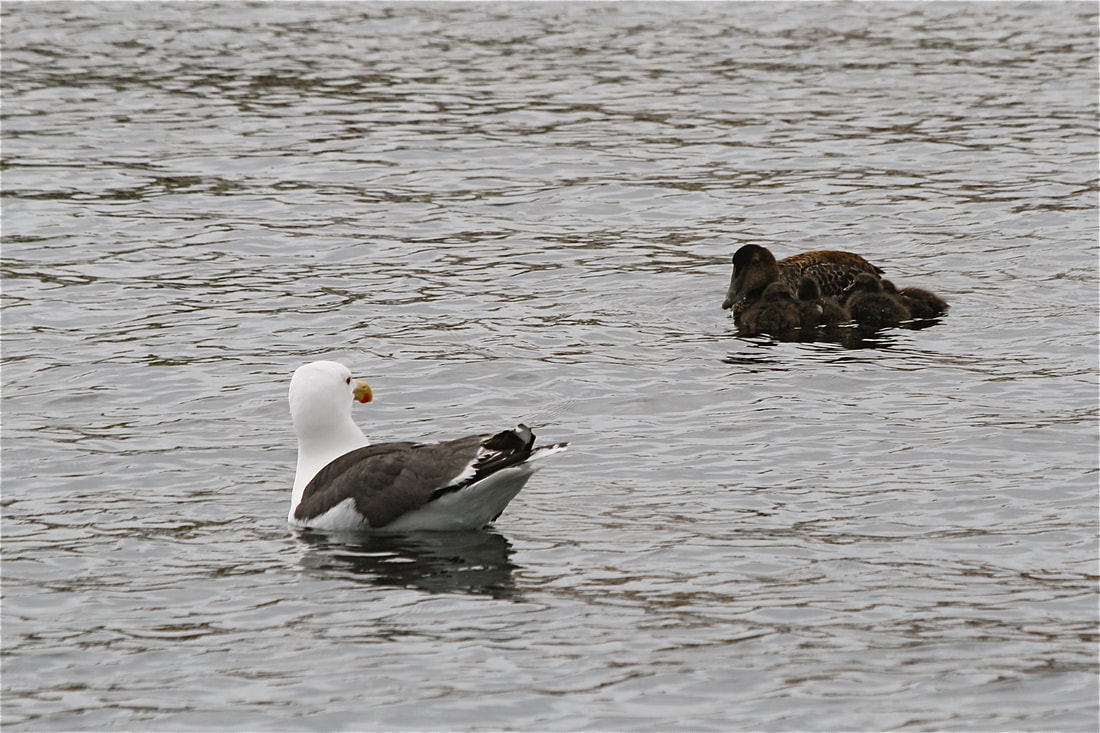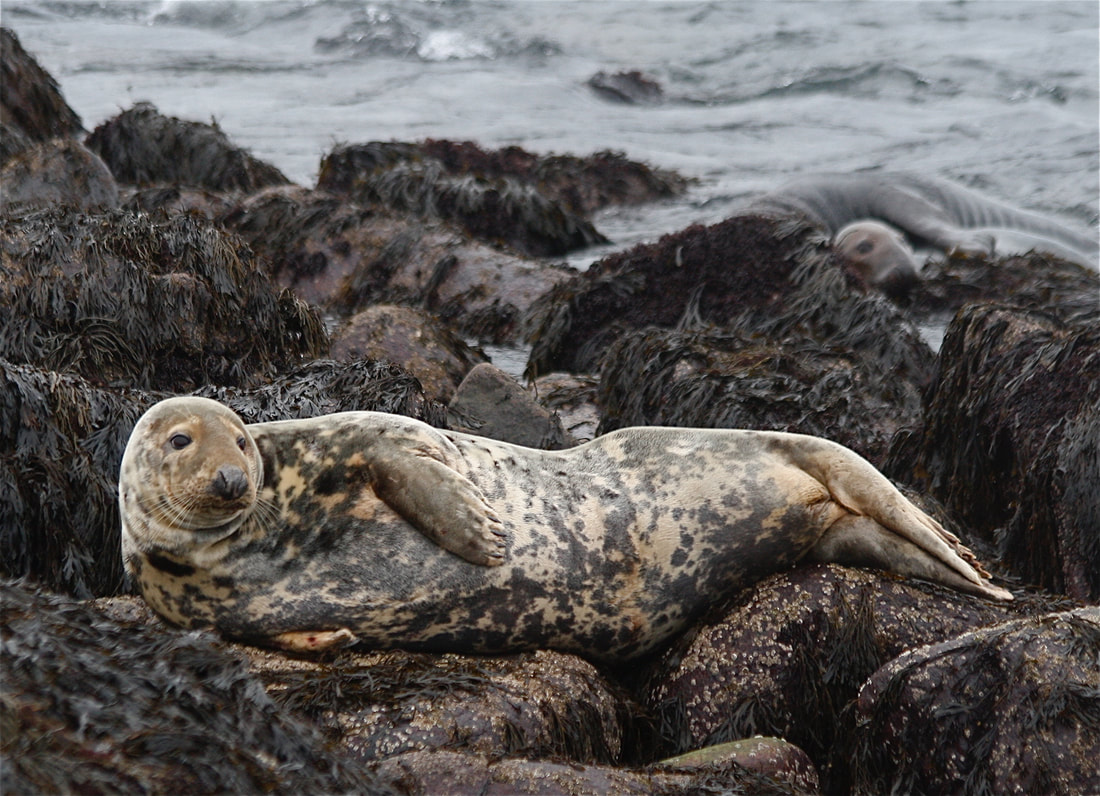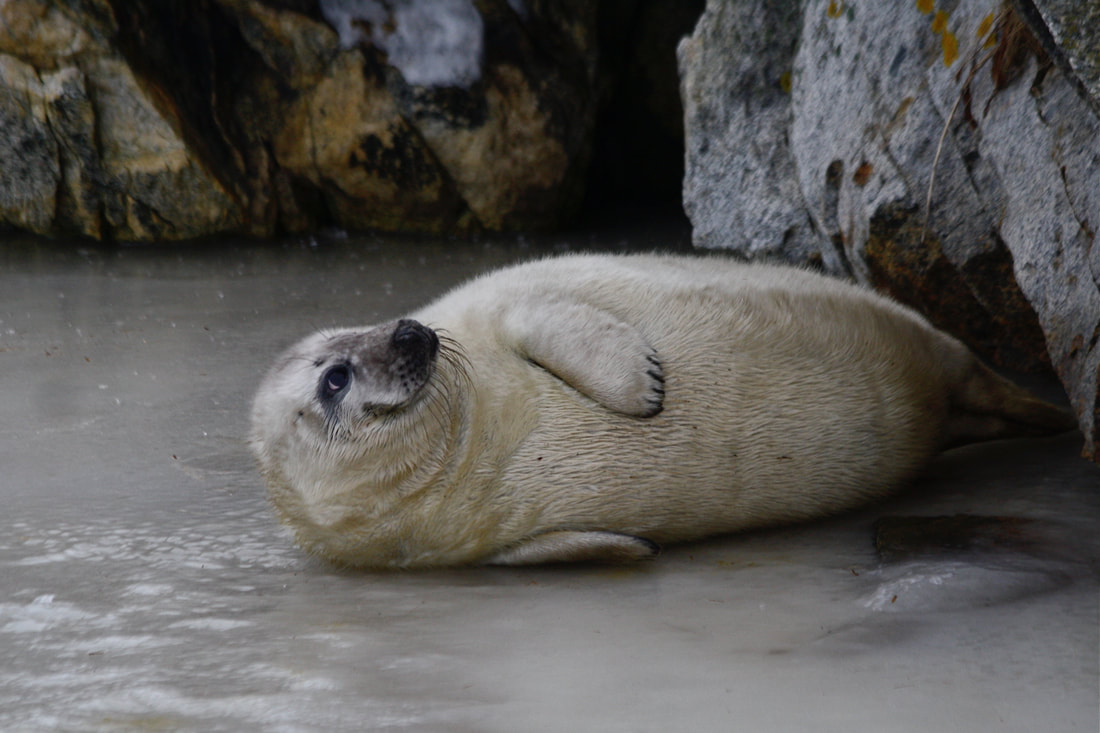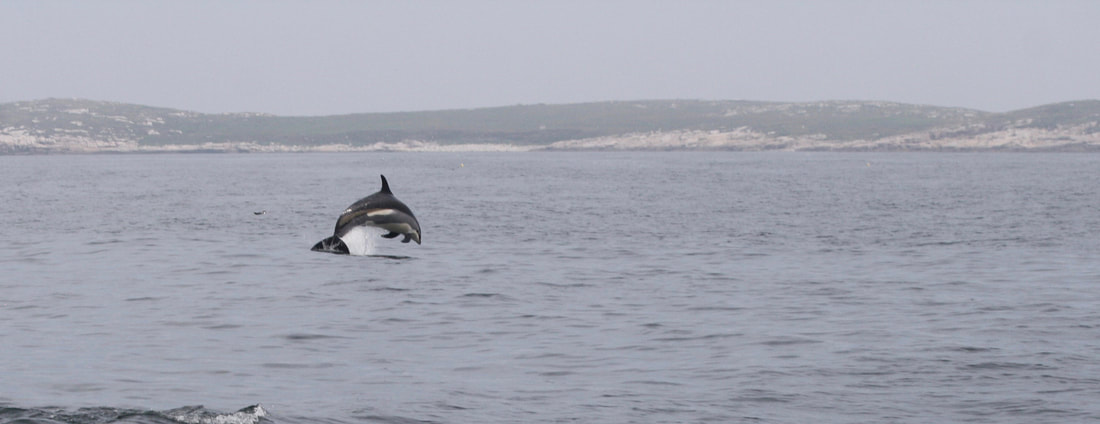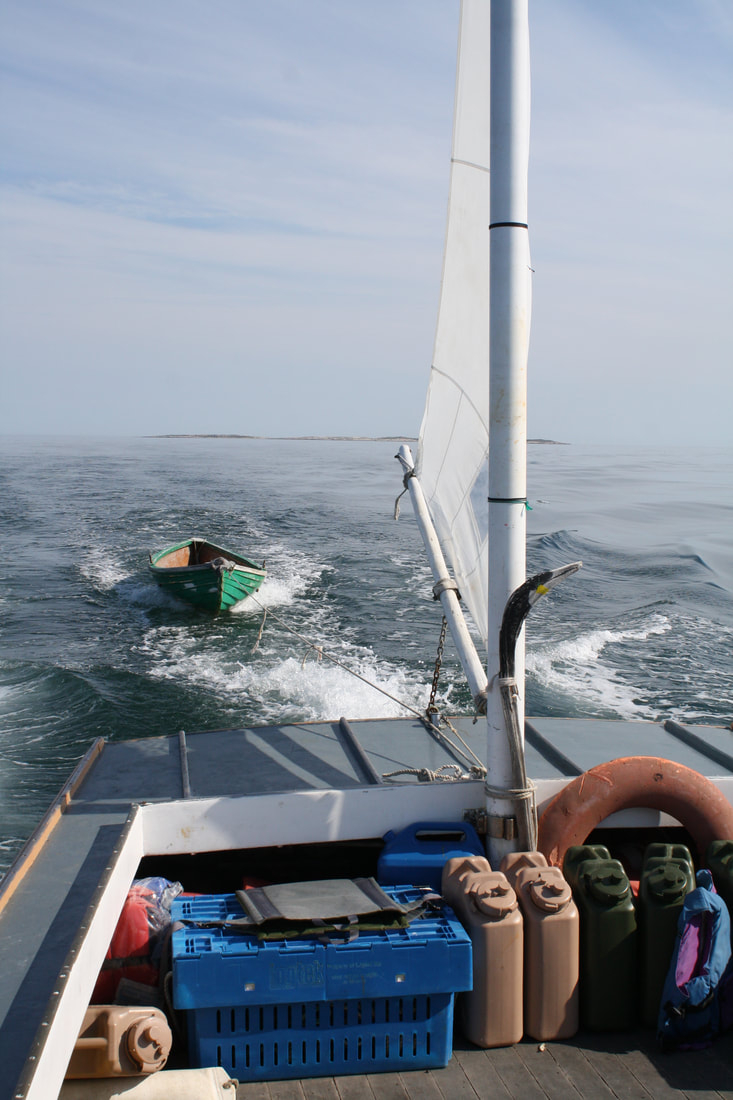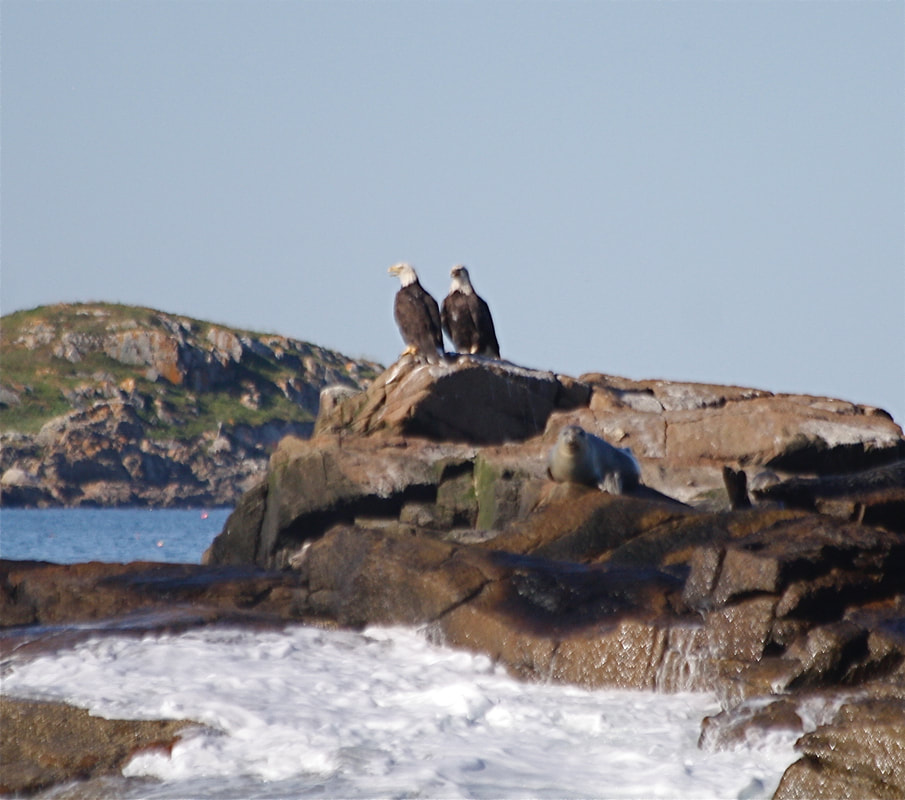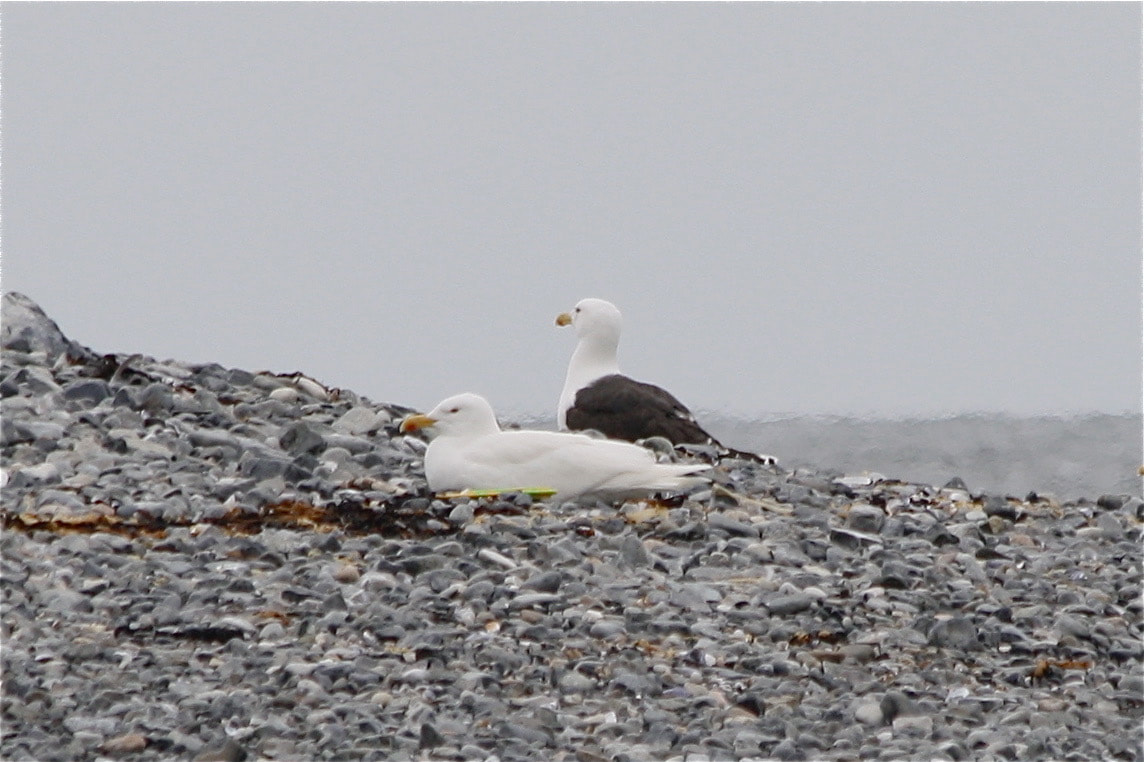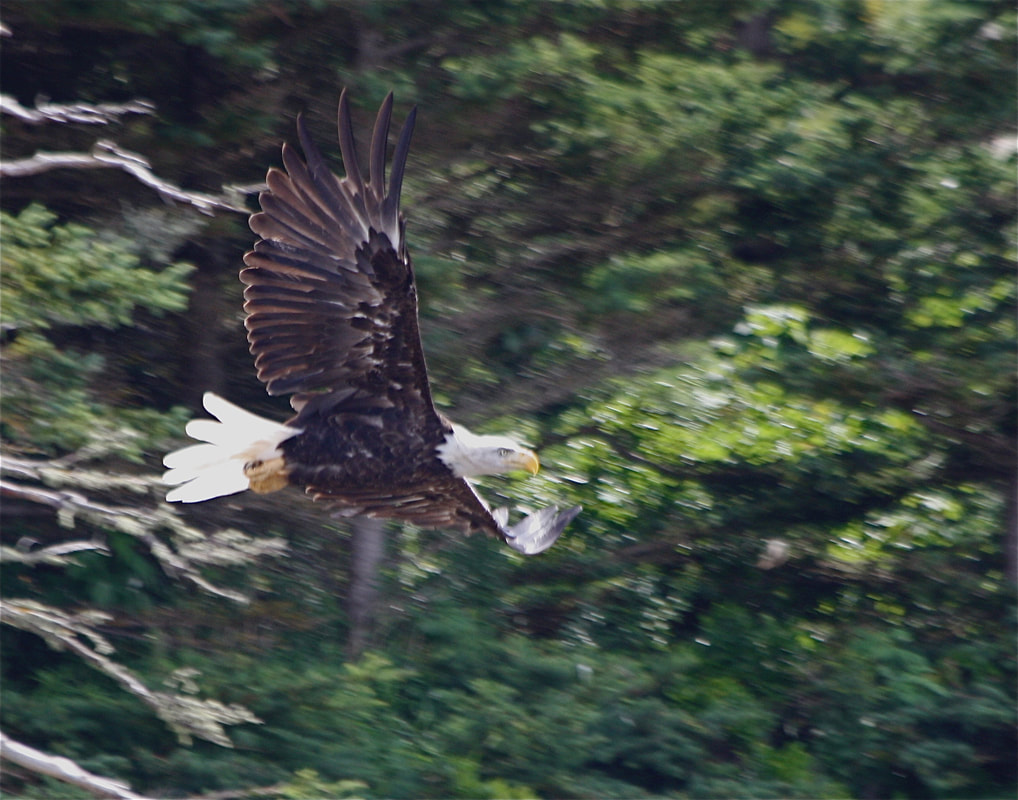Vinalhaven Seal Island
Here I try to give you some idea of what you will, and or might see on a trip to Seal Island, more of the same that was on the homepage but different photos mostly.
Seal Island is 9 miles SE of Vinalhaven Island, it takes little more than an hour to get down there in my 36' Jarvis Newman "SKUA"
the Island is a bit over a mile long and narrow.
There are many photos that I have taken during trips to Seal Island over the last several years at http://sightingsfromskua.blogspot.com
And here are some more
The trip starts from the public landing right next to the ferry pier on Vinalhaven, that's not it, I'm standing on it.
SKUA, 36' Jarvis Newman, 1973, off Otter Island, (photo by Eric Davis)
An Arctic Skua, name sake of our vessel, aka. Felonius Skua, or parasitic jaeger.
not named for the Great Skua, though admirable, a bit more thuggish and less elegant than are the Felonius Skuii
not named for the Great Skua, though admirable, a bit more thuggish and less elegant than are the Felonius Skuii
Adult eagle, long ledge, Vinalhaven, Mt Maguntacook beyond.
Little Roberts Island, Formerly the site of a Mixed Great and Double-crested Cormorant Colony, dispersed by eagles, also Black-Backed Gulls and Herring gulls, Black Guillemots and a few Eiders nest on this little islet, there was a pair of Canada geese recently.
Herring gull, off Great Spoon island east of Isle au Haut, not on the way to Seal Island.
Yellow Ledge and Otter Island
Porpoise, Brimstone Island beyond, we usually see porpoise, they tend to be not very cooperative, but sometimes we see them very well
harbor porpoise, Phocoena phocoena,
from the wikipedia:
The English word porpoise comes from the French pourpois (Old French porpais, 12th century), which is from Medieval Latin porcopiscus, which is a compound of porcus (pig) and piscus (fish). The old word is probably a loan-translation of a Germanic word, compare Danish marsvin and Middle Dutch mereswijn (sea swine). Classical Latin had a similar name, porculus marinus. The species' taxonomic name, Phocoena phocoena, is the Latinized form of the Greek φώκαινα, phōkaina, "big seal", as described by Aristotle; this from φώκη, phōkē, "seal".
The species is sometimes known as the common porpoise in texts originating in the United Kingdom. In parts of Atlantic Canada it is known colloquially as the puffing pig, and in Norway ‘nise’, derived from an Old Norse word for sneeze; both of which refer to the sound made when porpoises surface to breathe.
from the wikipedia:
The English word porpoise comes from the French pourpois (Old French porpais, 12th century), which is from Medieval Latin porcopiscus, which is a compound of porcus (pig) and piscus (fish). The old word is probably a loan-translation of a Germanic word, compare Danish marsvin and Middle Dutch mereswijn (sea swine). Classical Latin had a similar name, porculus marinus. The species' taxonomic name, Phocoena phocoena, is the Latinized form of the Greek φώκαινα, phōkaina, "big seal", as described by Aristotle; this from φώκη, phōkē, "seal".
The species is sometimes known as the common porpoise in texts originating in the United Kingdom. In parts of Atlantic Canada it is known colloquially as the puffing pig, and in Norway ‘nise’, derived from an Old Norse word for sneeze; both of which refer to the sound made when porpoises surface to breathe.
Wilsons Petrel, Mother Carey's Chicken's Breed in the southern hemisphere they show up during the early summer, sometimes there are lots of them seen on the way to Seal Island. regular but spotty summer visitor, Leaches Petrel bred on Seal Island and many other islands in the area but they are rarely seen in the bay, they go well offshore and come to the islands in the dark.
From the Word histories:
WHENCE THE NAME “MOTHER CAREY’S CHICKENS”?
The names “Mother Carey’s Chickens” and “Stormy Petrel” are applied by sailors to several species of birds, ( we have Wilson's and leaches in the gulf of Maine) Despite its name, it is a tiny creature, scarcely larger than a lark, the very smallest web-footed bird known; of a sooty-black color, with a little white on its wings and tail, and so thoroughly given up to an Esquimau diet of fish and whale blubber as to be extremely unpleasant to approach.
[…]
The name may be regarded as an English corruption of “Mater Cara” (Dear Mother), the appellation bestowed by Italians upon the Virgin, who from time immemorial has been regarded as the special patroness of mariners.
The halcyon, which has been in a measure identified with the petrel, is familiarly known on the Mediterranean coast by the French as “l’oiseau de Notre Dame¹,” “avis Sanctae Maria²,” and by the Sardinians as “ucello pescatora Santa Maria³.” Birds of this class, which are thought to give friendly warning at sea of approaching storms, are naturally regarded as birds or messengers of the Virgin, who, in the character of their patroness, has the safety of the mariner in her special keeping.
From the Word histories:
WHENCE THE NAME “MOTHER CAREY’S CHICKENS”?
The names “Mother Carey’s Chickens” and “Stormy Petrel” are applied by sailors to several species of birds, ( we have Wilson's and leaches in the gulf of Maine) Despite its name, it is a tiny creature, scarcely larger than a lark, the very smallest web-footed bird known; of a sooty-black color, with a little white on its wings and tail, and so thoroughly given up to an Esquimau diet of fish and whale blubber as to be extremely unpleasant to approach.
[…]
The name may be regarded as an English corruption of “Mater Cara” (Dear Mother), the appellation bestowed by Italians upon the Virgin, who from time immemorial has been regarded as the special patroness of mariners.
The halcyon, which has been in a measure identified with the petrel, is familiarly known on the Mediterranean coast by the French as “l’oiseau de Notre Dame¹,” “avis Sanctae Maria²,” and by the Sardinians as “ucello pescatora Santa Maria³.” Birds of this class, which are thought to give friendly warning at sea of approaching storms, are naturally regarded as birds or messengers of the Virgin, who, in the character of their patroness, has the safety of the mariner in her special keeping.
Mid Seal Island from the North, July 30, somedays it seems to take a while to get there, but usually there is something in the bay to see on the way out there.
Great Cormorant, there were @ 30 pairs of Great Cormorant breeding on Seal Island in 2018. Vinalhaven Seal Island is the last refuge for this dwindling population in the Gulf of Maine. (you can read more in the Article about them at this site.).
Spring Plumage Great Cormorant, white flank and white nape feathers, Seal Island
Black Guillemots, squeakers,Teistis, We will see these every day of the year. In mid May I have counted 2,000 individuals around the island.
They are great, Very capable, they can: fly, swim, dive, walk, spelunk.
much more widely spread as breeding bird than the other alcids in the region, Puffins, Razorbills and Murre.
They are great, Very capable, they can: fly, swim, dive, walk, spelunk.
much more widely spread as breeding bird than the other alcids in the region, Puffins, Razorbills and Murre.
these guillemots are very fond of these red rock eels, aka rock gunnel.
Black guillemots on the spooge pool, Seal Island
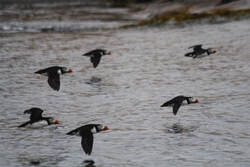
Puffins, yes there are Puffins, @500 pairs now breed on the island, (2018),some days there are hundreds of individuals some days there are, dozens, but we see them every time down there between May and Labor Day, there are usually a few that feed into early September.
Puffin incoming with a nice load,
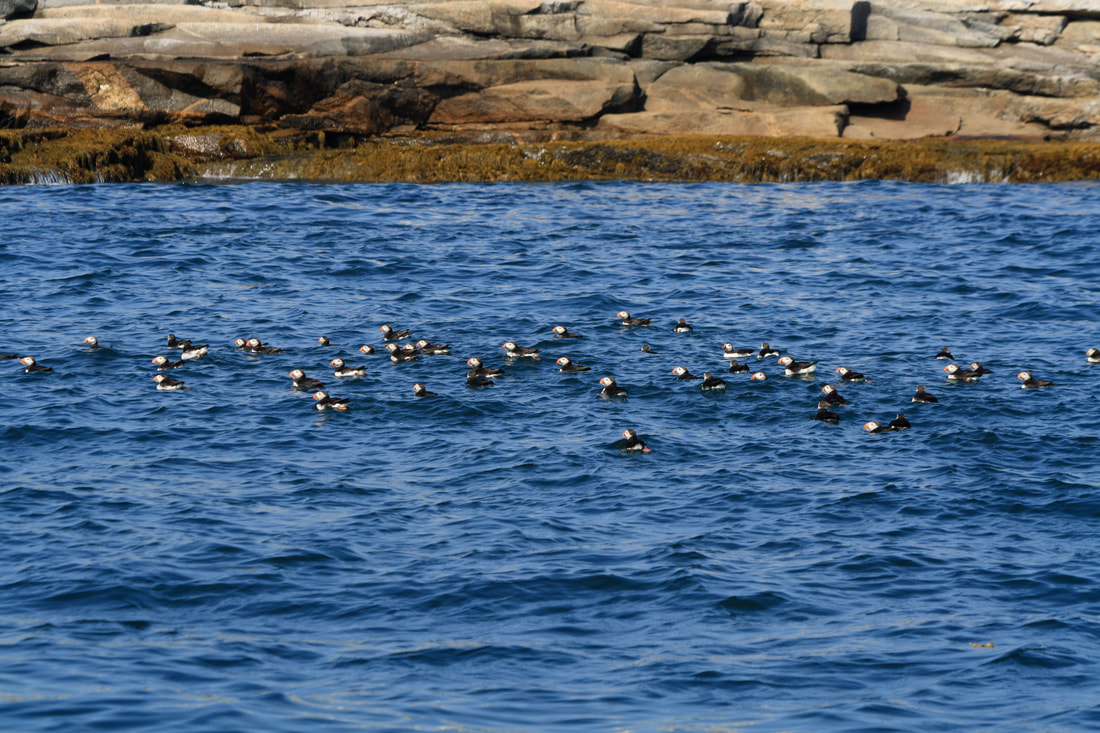
a raft of Puffin floating in Murre Cove, somedays there are hundreds there.
Razorbill, Alca troda, Petit Pengouin French, Alca Spanish, Tinker, Newfoundland.
As with other Alcid populations in the Gulf of Maine, Puffins and Murre, the regions Razorbill population is growing and expanding. we see them everyday at Seal Island, May through late early August and might see them in the bay later in the summer. You can see them in the winter from the Vinalhaven to Rockland ferry.
As with other Alcid populations in the Gulf of Maine, Puffins and Murre, the regions Razorbill population is growing and expanding. we see them everyday at Seal Island, May through late early August and might see them in the bay later in the summer. You can see them in the winter from the Vinalhaven to Rockland ferry.
Sometimes the razorbills perform a pair flight display when they head into the wind slow their wingbeat and glide/slowflap together for a few strokes, it is cool.
murres, recently have reestablished breeding at Matinicus Rock, 7 miles from Seal Island, we see murre almost every day at Seal, especially in the morning, May to early August.
Seal Island has its own climate, cold and salty, and this arctic flower rose crop, formerly Cedum Rosea, now Rhodiola rosea grows there, near the southern edge of its range
similarly Seal Island is near the current southern end of the Range of Arctic terns. there have been in the order of 900 pairs of Arctic terns breeding at Seal Island, also 1,200 pairs of Common tern, having recolonized the island in about 1990 after herring and black-backed gulls were killed and pushed back, an effort that continues. If a gull starts eating tern eggs or chicks the wildlife managers on the island will shoot it.
Adult and Fledgling Common Tern, longer legs than arctic Terns, fledglings are ever hungry and requesting fishes.
Common terns, a couple of Puffins, Brimstone in the distance.
Common Terns.
Fledgling Common Terns, some years they raise lots of young, other years they do not.
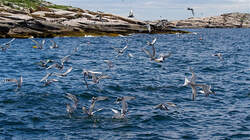
terns feeding off NE end of Seal Island
Eider male and female, these ducks we see every day of the year, but their numbers have recently been reduced drastically, due to the fondness eagles have for eating their ducklings
Puffins passing an occupied blind, there is a team on the Island during late spring and summer keeping eyes on the birds
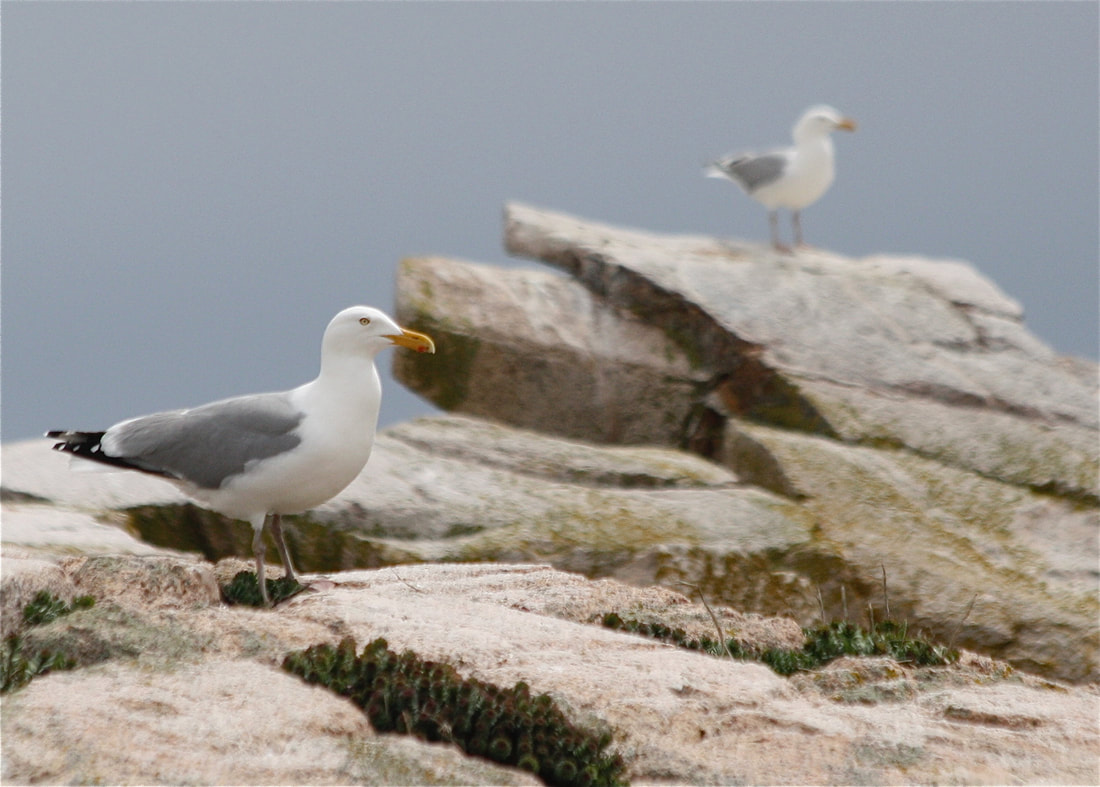
Herring Gull on Seal Island, what was formerly Sedum rosea in the foreground
Observant, and resourceful generalists gulls are much like jays and people, their magnificence obscured by their familiarity.
A territorial pair of Black-Backed Gulls on the western head of Seal Island. Despite decades of persecution, some gulls persist and raise young on the island.
Black-backs like to eat ducklings and tern chicks, un endearing them to duckophiles.
Bald Eagle Otter Island, these are places we pass on the way to Seal Island. We see eagles every day on our way pat Otter Island on the way in from Seal Island. A pair if Eagles built a nest and raised a young on Otter Island in 2020, I'm sure its not the first time but it has been a while.
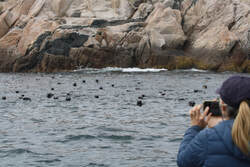
Grey Seals, back Side of Seal Island, calm day, they love that spot, I don't know why.
Female Grey seal, January 14, 2014, I think she is full of pup, this was Dec.
Grey Seals formerly extirpated from New England pup on Seal Island during December and January, thus the name.
White-sided dolphin near the western bite of Seal Island, Aug 9, 2020, late summer sometimes we see herds of these, it has been rare to see them North of Seal Island, but out beyond Seal they are more common, when I have seen them they have often been going from east to west, the gannets and shearwaters follow them around, it is a thrill to be near them they seem to be having a good time.
A few Miles North of Seal Island on the way in, glass Novi Dory in tow, Corm the Great Cormorant totem lashed to the mast.
Pair of adult eagles and harbor seal, Yellow ledge, Roberts' Island beyond
There was a leucitic black back in the bay for years, here roosting at Little Brimstone, an Ivory Black-Back
